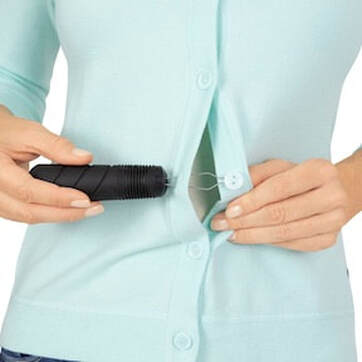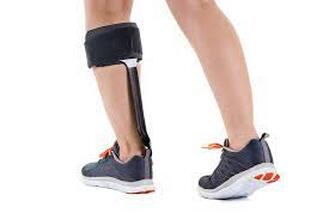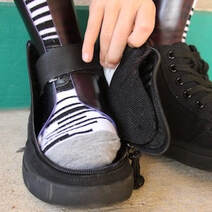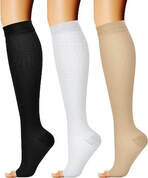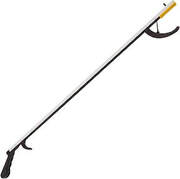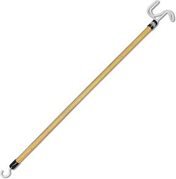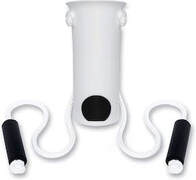|
Assistive devices and clothing modifications recommended by your occupational therapist can make it easier to get dressed. As your muscles weaken, getting dressed by yourself can become challenging and exhausting. There are a number of strategies and assistive devices that can help you continue to get dressed on your own. As different challenges arise, ask the occupational therapist at your ALS clinic, outpatient occupational therapy, or home health agency for suggestions. |
Wearing Clothes that Work for You
|
If you find that it is taking longer than you would like to get dressed, you may need to make some modifications to your current wardrobe and/or find some new clothes that work better for you. Many people, for example, find that wearing pants or skirts with elastic waistbands are easier to pull up and down.
Ideally, you will find clothes that you feel are both functional and fashionable. Companies like Silverts and Tommy Hilfiger sell adaptive clothing that is easier to put on and take off. If buttons or zippers are difficult, there are ways to modify your clothing, such as adding larger zipper tabs or key rings and replacing buttons and zippers with magnets or Velcro. Your local tailor should be able to make these and other modifications. |
|
Finding Footwear that Works for You
|
Finding the best footwear for you will depend on your current needs and mobility. If you are walking with or without a walker and have foot drop, you’ll want to avoid footwear like flip flops that are going to increase your chances of tripping and falling. If you are walking with an ankle foot brace (AFO), your best option will probably be supportive athletic shoes with laces. When it comes to footwear, safety and stability must come before fashion.
If you are having trouble tying your shoes, you could replace your laces with elastic shoe laces, which will essentially convert your shoes into slip-ons because you’ll only need to tie them once. You may also want to try slip-on shoes or shoes that fasten with zippers or Velcro. There are also adaptive shoe brands such as Kizik, Friendly Shoes, and Zeba Shoes that make shoes that are easier to put on and take off. If your feet swell or if you wear AFOs, you may want to research shoe brands like Billy Shoes that offer extra-wide sizing. To decrease swelling, you can try wearing compression socks, but you will first want to talk with your physical therapist, occupational therapist, or neurologist about the amount of compression needed and which type of socks will be best for you. If you find regular compression socks hard to take on and off, you can try compression socks with zippers. |
Ankle foot orthosis
Adaptive shoes
Compression socks
|
Dressing Tips and Devices
|
When getting dressed, make sure that you are in a stable, comfortable position that can help you save energy. Sitting on the edge of your bed or on an armchair may be helpful if standing while dressing feels unsteady or tiring. Some people find it easier to lie down while putting on some clothes.
When putting on shoes or socks or pulling up your pants, try to avoid bending over at the waist, as this can cause shortness of breath and expend more of your energy. If you are having trouble pulling up tight pants or jeans, for example, you can try using a reacher or dressing stick. If you are finding it harder to put on and pull up your socks, you can try using a sock aid. If you are having trouble slipping your shoes on without bending over, a long-handled shoe horn might help. |
|
If you are having a hard time putting on shirts, a dressing stick may help. If one arm is stronger than the other, put the weaker arm in first so your stronger arm can do most of the work. And if you are having trouble buttoning or zipping, a simple button hook / zipper pull may help you continue to get dressed independently.
Some other things that may help you get dressed independently include wearing bras that fasten in the front, using suspenders to help pull your pants up, and adding loops to the waistbands of pants.
If you are still struggling to get yourself dressed—or find that it is taking too long or using a lot of your energy—ask your caregiver to assist with some or all of these dressing activities.
If you are still struggling to get yourself dressed—or find that it is taking too long or using a lot of your energy—ask your caregiver to assist with some or all of these dressing activities.

